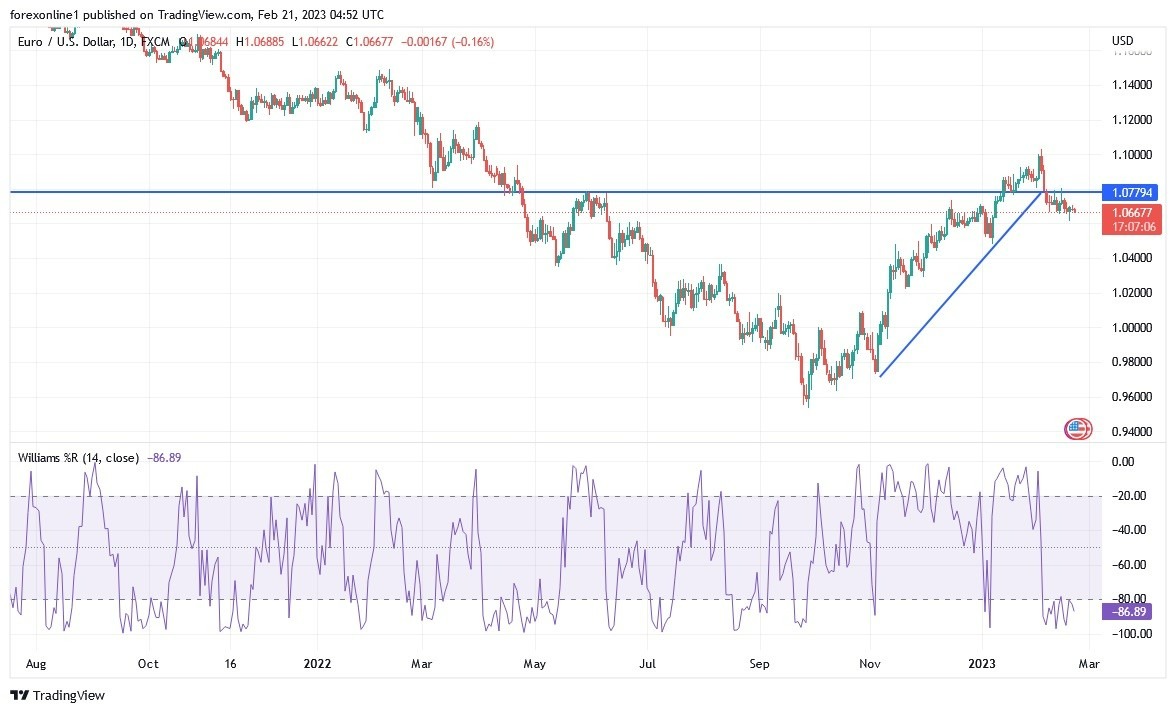- The EUR/USD exchange rate erased all of its New Year's gains over the course of February trading but drew support on Friday from the hawkish resolve of the European Central Bank (ECB).
- This could ease the single European currency as it navigates a minefield of economic data in the coming days.
- At the beginning of this week's trading, and in the midst of a US holiday, the euro moved against the dollar, towards the level of 1.0704, before returning to stability around the support level of 1.0670 at the time of writing.
The single European currency rose against all major currencies except the dollar last week after receiving a bid on Friday when the continent's current account balance was said to have tipped back into surplus. A policymaker at the European Central Bank warned of upside risks to market expectations for interest rates.
“Markets are priced for perfection,” executive board member Isabelle Schnabel told Bloomberg News, “They assume that inflation will drop very quickly towards 2% and stay there, while the economy will be fine. And that would be a very good result,” she added.
“But there is a risk that inflation will prove more stable than what financial markets are currently determining. In terms of the final rate, we need to look at the data coming in to see how far we have to go,” she said, referring to expectations that the ECB deposit rate will reach 3.5% later this year.
Friday's interview was followed by a rise in the market's implied expectations for the European Central Bank's deposit rate, now seen close to 3.7% later in the year, in a repricing of expectations that helped lift the euro-dollar rate back above important technical support.
Meanwhile, dollars were broadly bought after US inflation eased less-than-expected last month, while producer price data indicated that costs within supply chains remained stubbornly high in January. That data helped push expectations for a Fed rate peak to new highs, leaving derivatives markets pricing Friday in the September 2023 peak in the 5.25% to 5.5% range for the fed funds rate.
Commenting on the performance, Joseph Capurso, Head of International Economics at the Commonwealth Bank of Australia, wrote, “The US economy is not going through a soft or hard landing. And no relegation at all, so far, in our view."
Overall, the ECB's hawkish resolve and changing outlook on interest rates in the eurozone have helped insulate the euro from the recovery in dollar exchange rates so far. Much about price action this week is also likely to be determined by a series of European and US economic figures.
EUR/USD Forecast:
EUR/USD is heading lower on the hourly chart, forming lower highs and lower lows within the descending channel. And the price is currently testing the 50% Fibonacci retracement level, which might keep the gains under control. And if so, EURUSD may resume sliding to the swing low at 1.0615 or the channel bottom near 1.0600. On the other hand, the higher correction might reach 61.8% Fibonacci retracement, which is closer to the top of the channel at 1.0730.
The 100 SMA is already below the 200 SMA to confirm that the path is to the downside or that selling is more likely to gain momentum than the reverse. These moving averages also correspond to the 50% Fibonacci retracement, adding to its strength as a ceiling. However, the gap between the indicators is narrowing to reflect a slowdown in bearish pressure and a possible bullish crossover. Stochastic has been indicating overbought levels for some time and seems ready to head down to indicate the return of selling pressures. The RSI has a bit more room to run but is hovering near the overbought territory as well.

Ready to trade our daily Forex analysis? We’ve made a list of the best currency trading platforms worth trading with.

